Australian Gems
Mad About Gems?
You’re not alone. That’s why TVSN will be showcasing exquisite Australian gemstones every day this week.
Each day we’ll discover new home grown treasures, from turquoise to sapphires, to luxurious pink diamonds.
Join our gem expert Gavin Linsell to learn everything you need to know about some of these Aussie gems.
Australian Golden Prehnite
- Australian Golden Prehnite is unearthed in scant quantities from desolate tablelands surrounding Wave Hill Station in Australia’s Northern Territory.
- This stone’s beautiful fusion of greens and golds are reminiscent of Australia’s national flower, the Wattle.
- The original South African deposit still yields Prehnite, as well as Mali and Namibia, but with better-quality, larger crystals, Australia is the world’s premier source.
- Australian Golden Prehnite are also one of the few gemstones that are totally natural and unenhanced, accentuating their rarity and desirability.
- An excellent jewellery gemstone (Mohs’ Hardness: 6 – 6.5)
Kings Plains Sapphires
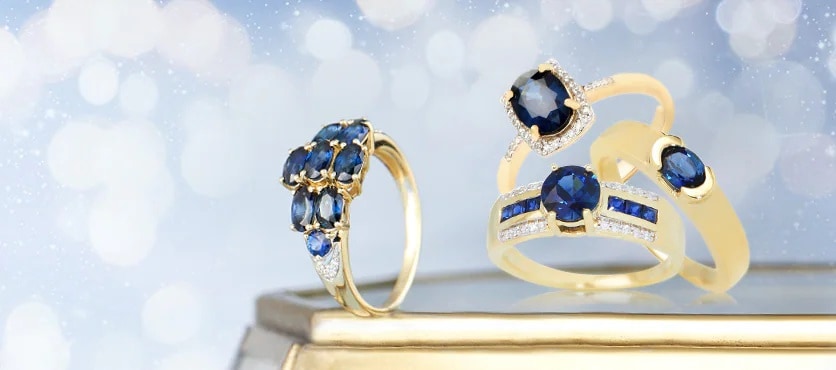
- Kings Plains Sapphires were discovered in 1854 in the northeast of Inverell in New South Wales.
- Australia was a major source of Sapphires around the world.
- Ranging from pastel through to midnight blue, approximately 90 percent of Australian Sapphires are blue, with the majority displaying rich royal to midnight blues.
- Sapphires are the birthstone for September.
- The world’s second hardest gemstone after Diamonds, Sapphires are an excellent choice for everyday jewellery (Mohs’ Hardness: 9)
Australian Turquoise
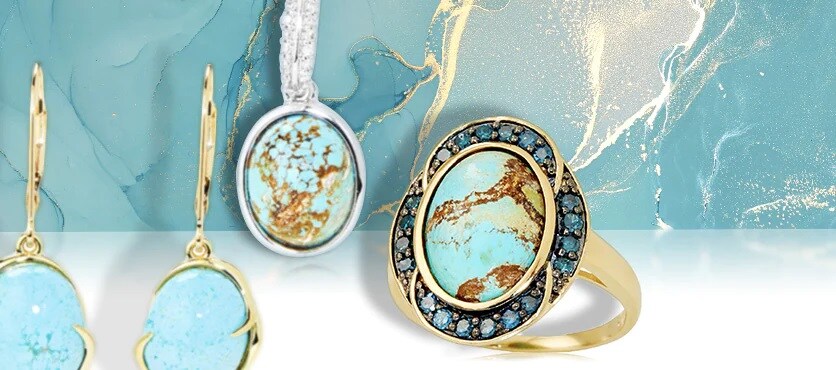
- Australian Turquoise are rare, blue gemstones with beautiful coffee and chocolate egg-shell and spider web patterns.
- Each piece of Australian Turquoise is individual and unique
- Australian Turquoise is a natural and unenhanced gemstone
- Deposits are found near Broken Hill in New South Wales and were first mined in the mid to late 1990s.
- Turquoise is one of December’s Birthstones.
- A gemstone of prosperity in many cultures, Turquoise is purported to lighten or darken in colour based on the mood or health of its wearer.
- Australian Turquoise is a durable jewellery gemstone (Mohs’ Hardness: 5 - 6)
Australian Opals
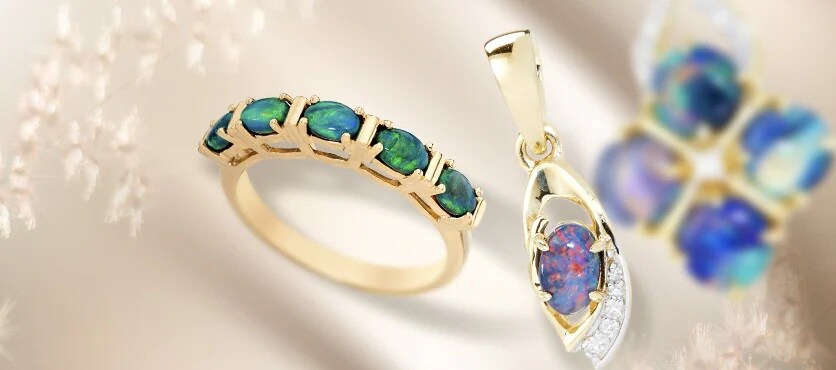
- First discovered in 1849, Australia’s Opal fields might be the largest in the world, but only 25 percent of Australian Opal mined is gem-quality.
- Black Opal is from deposits at Lightning Ridge (New South Wales) discovered in 1902.
- Undeniably beautiful, Australian Opal appears to have a rainbow trapped within. The rarity hierarchy of colours is red, orange, yellow, green, blue and violet, with value lying in the brilliance, brightness and strength of colours displayed.
- Australian Opals is one of the birthstones for October.
- A relatively durable jewellery gemstone, Australian Opal (Mohs’ Hardness: 5.5 – 6)
Australian Thulite
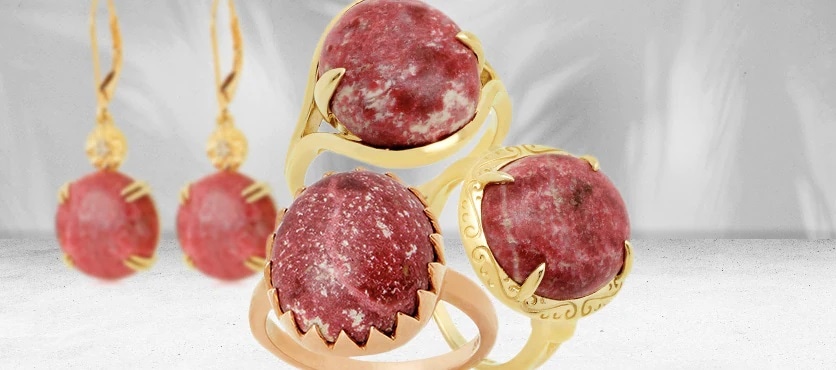
- Australian Thulite is found near Nymagee in New South Wales, Nymagee is also home to ‘Clancy of the Overflow’ (1889), a poem written by the famous bush poet Banjo Paterson.
- Thulite is a variety of Zoisite – the same gemstone family as Tanzanite.
- Displaying a gorgeous blend of pinks and reds, with attractive and delicate whitish mottling, Australian Thulite is a beautifully unique and incredibly rare, down-under twist on the national gem of Norway.
- Obtained from crystals unearthed in 2009, Australian Thulite is unfortunately no longer commercially mined or readily available.
- Australian Thulite is an everyday jewellery gemstone (Mohs’ Hardness: 6.5 - 7)
Australian Hartsite
- Australian Hartsite is a beautifully unique Zircon exclusive to the Northern Territory’s Central Harts Range Fossicking Area.
- It combines gorgeous peachy champagnes and pinkie peaches with its highly desirable, signature diamond-esque optical beauty.
- Australian Hartsite has been collected by artisanal miners, fossickers, prospectors and rock hounds since the 50s.
- Zircon is one of December’s birthstones.
- An excellent jewellery gemstone (Mohs’ Hardness: 7.5)
Australian Pink Diamonds
- A pink diamond is the rarest and most sought after naturally coloured diamond in the world.
- Diamonds have long been given as a symbol of love, and now the exclusivity of the Pink Diamond is captivating the hearts of people around the globe.
- The Argyle Diamond Mine was located in a remote corner of Western Australia’s east Kimberly region.
- The first Argyle Pink Diamond was discovered in 1979.
- Mining started in 1983 and produced 90% of the world’s supply of rare pink diamonds, yet less than 1% of the mine’s total production was pink.
Australian Lattice Sunstone
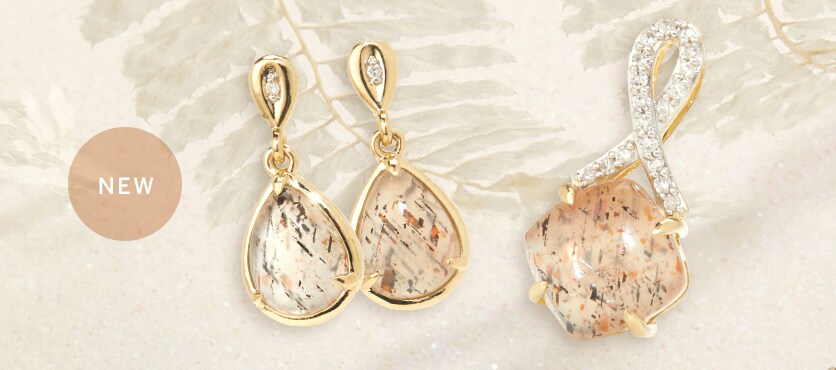
- Australian Lattice Sunstone is exclusively from the Northern Territory’s remote Harts Range.
- Commercial mining commenced around 2015.
- It’s striking lattice patterns, parallel lines and triangular inclusions are impossibly rare in nature, but also totally reliant on precise orientation during optimal lapidary.’
- Sister gem to Labradorite and Moonstone, Australian Lattice Sunstone is also known as Rainbow Lattice Sunstone.
- An excellent jewellery gemstone (Mohs’ Hardness: 6 – 6.5)
Australian Matahina Pearls
- Australia and Australian pearls have been a central part of the worldwide pearl business since the 1800’s.
- Broome on the far north-west of Australia’s coastline has been the dominant sea port where pearling is based largely due to the wealth of oysters on the floor of the ocean at eighty mile beach.
- These range in size from 9 to 25 millimetres and the average size is 12.5 millimetres.
